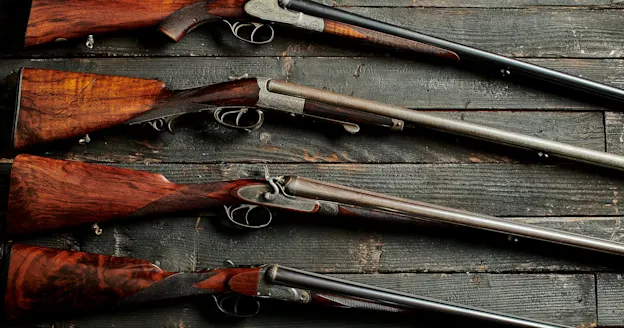It’s finally here. The long-awaited spring campaign that leads us to chase gobbling turkeys across the greening landscape has arrived in parts of the southern U.S., and is right around the corner for the rest of us. Last week we revealed the Best Days of the Strut
—seven dates when you need to be out there (assuming your season is open)—and the first must-hunt day for spring 2024 is Monday April 25. In the weeks that follow, as seasons open across the county, we’ll highlight six more key dates along with expert tactics to help you tag a tom. But for now, we turn our attention to south Texas, a place not only known for excellent turkey hunting, but one that features one of the country’s earliest openers.
Our Day 1 expert is Jim Dickson, who hails from Louisiana but makes it a point to travel west to kick his season off. While turkey seasons are just a promise across much of the country, Dickson’s strategies and advice will work for early-season birds anywhere and anytime. With breeding activity just getting started, Dickson expects to find flocked-up birds and to hear lots of gobbling, which can be both a good thing and a frustrating thing. Here’s a little more on who he is, and how it gets it done when the season is brand new.
The Expert: Biologist and Champion Call Jim Dickson

Jim Dickson, left, and son John pose with a Rio Grande gobbler taken on a Texas hunt. Jim Dickson
A retired wildlife biologist and professor of Forestry and Wildlife Conservation, Dickson is also a widely respected researcher and expert on the wild turkeys and their management. The prolific author has penned two books and many articles on the wild turkey; he’s also been awarded the Henry Mosby Award by the National Wild Turkey Federation (NWTF) and is a three-time Texas State Champion turkey caller. Dickson starts his spring hunting in south Texas but pursues gobblers in many states each year.
The Strut Stage: Pre-Peak breeding
As noted above, turkeys are just breaking out of winter flocks, with gobblers (and hens) sorting out dominance and pecking order issues. Expect to still find multiple birds grouped together and hear lots of gobbling, especially on and near roost sites. Dawn is apt to be a bit chaotic with large groups of birds roosting together, then flying down, and eventually sorting things out for the day. Some gobblers will pair up and wander off with willing hens, but because some hens won’t be ready for breeding this early in the cycle, some gobblers will be left all by their lonesomes, while others will lose contact with their hens as the morning progresses—leaving both vulnerable to your calling.
Expert Tactic for March 25: Hunt Mid-Morning Strut Zones

No matter where you hunt, early-season turkeys tend to roost in groups. John Hafner Photography
Trees can be a scarce commodity in south Texas, which makes finding roost sites pretty easy. As noted, that often translates to grouped-up toms and lots of gobbling at dawn, but dealing with multiple turkeys with plenty of hens right in front of them can also be an exercise in frustration. Dickson deals with it by backing off roost and finding strut zones where toms hope to hook up with hens later in the morning.
“Most gobblers will have up to six hens with them on the roost, but when they fly down and the morning wears on, they get in areas with thick cover or poor visibility and all of a sudden those same gobblers will get separated from hens and start looking hard. If I’m set up in a good strut zone, my chances are usually good,” he says. “To me the most exciting sign I can find are strut marks in the sand, which I typically find in openings that provide some visibility; power line right of ways are an excellent starting point for finding this sign.”
Dickson uses aggressive calling, and a jake decoy to lure in mid-morning toms. “I call my jake decoy ‘Judas’ because he’s betrayed in so many gobblers,” Dickson laughs. “A lot of turkey reaction to decoys depends on hunting pressure, I think, but I’ve had much better luck with a jake decoy compared to a hen decoy, especially on a gobbler that has hens with him already. And I call pretty aggressively; some might think I overdo it a bit, but I think gobblers have a pretty primal instinct, and if you’re reasonably realistic, there’s a good chance they’ll respond. I like to strike with a box call, and as soon as I get a response, I try to switch the bird over and get him gobbling to a mouth call, then stick with that until he’s in range.”






